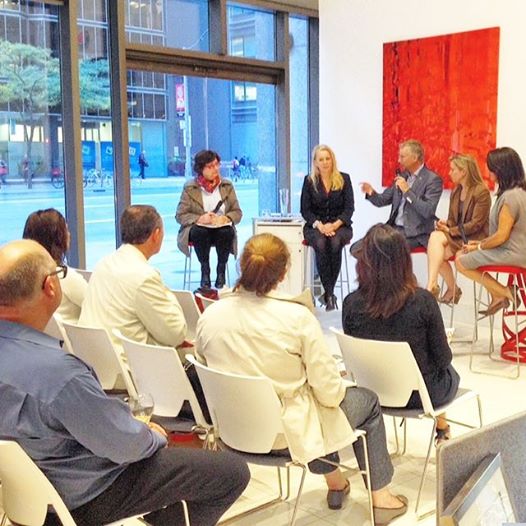
December 2, 2014
Bringing Happiness Into Workplace Design
On the business imperative, iterative design, and happiness

A “listening session” underway at the Haworth showroom in Toronto
Courtesy Haworth
Imagine you’re a corporate CEO. For at least three decades now, your organization has been chasing statistics on worker productivity, figures that have been hopelessly out of your reach. You keep asking: How do we show our board of directors that our shiny, new headquarters creates a well-run universe that rockets our bottom line into the stratosphere? How do we justify the purchase of state-of-the-art office furniture in terms of employee performance? How do we argue for hiring high-caliber design talent if it can’t be proven that the attractive and functional interiors they create improve our bottom line?
These questions, thankfully, are quickly going the way of the Selectric typewriter. A whole new world of employee behaviors, skills, and evaluations is developing to fit into our digitally connected world. A CEO of a soft drink company, as one designer in Toronto told it, talks about happiness as a business imperative. Happy people connect to each other and to their employers’ businesses. This state of happiness makes twenty-first century workers more productive and companies more profitable, so goes the new mantra that embraces the changing ways of work.
This discussion at the Haworth showroom in Toronto was the third in a series of four that Metropolis is having on the future of work and how its evolution is reshaping workplace design. I like to call these Haworth-sponsored talks “listening sessions.” What the sessions in Washington, DC, Toronto, and Houston reveal is a new sophistication of skills among those who design, furnish, build, and manage the workplace. Crossover expertise is thriving. It brings together architecture, interior design, engineering, change management, workplace strategy, construction management, sustainable practices, technology, and facilities management. Formerly siloed specialists of these fields now collaborate to design and maintain agile places for mobile workers, whether physically present or virtually connected.
These fluid ways of working reveal some other new needs, among them the necessity for devising ongoing performance standards for workplace design. “Iterative design,” a phrase that keeps popping up, indicates the ongoing involvement of collaborative teams after new spaces are occupied. It recognizes that the design job doesn’t end once the glamour shots are taken and the designer moves on to the next project. This ongoing management of the space ensures that mobile furniture serves the evolving needs of teams and individuals, and protects their health, safety, and welfare. All this change may create happy zones for high-performing workers. But let’s not try to measure happiness. Let’s just admit that it’s an essential descriptor of the human condition.





